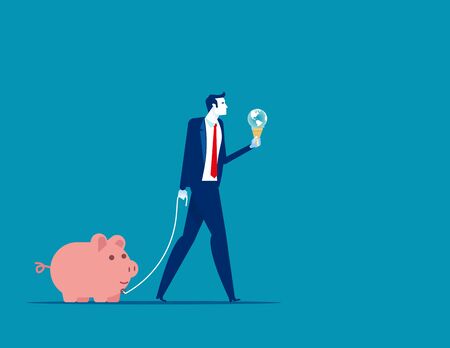What Is a Business Owners Policy (BOP)?
For many micro-entrepreneurs in the United States, understanding and managing risk is a key part of running a successful business. One of the most popular ways to protect your small business is through a Business Owners Policy, commonly known as BOP insurance.
An Overview of BOP Insurance
A Business Owners Policy (BOP) is a type of insurance package designed specifically for small businesses and micro-entrepreneurs. It combines several essential coverages into one convenient policy, making it both affordable and easy to manage. Instead of buying separate policies for different types of risks, a BOP bundles them together, which often results in cost savings and less paperwork.
Purpose of a BOP
The main purpose of a BOP is to provide comprehensive protection against the most common risks that small business owners face. These risks can include property damage (like fire or theft), liability claims from third parties, and even loss of income due to covered events. By having these protections under one policy, micro-entrepreneurs can focus more on growing their business rather than worrying about unexpected setbacks.
Why Its Popular Among Micro-Entrepreneurs in the U.S.
BOP insurance has become a popular choice among micro-entrepreneurs in the U.S. for several reasons:
| Feature | Benefit for Micro-Entrepreneurs |
|---|---|
| Simplicity | One policy covers multiple risks, making it easy to understand and manage. |
| Affordability | Bundled coverage usually costs less than buying individual policies separately. |
| Customizable Options | Can be tailored with add-ons specific to your business needs. |
| Credibility | Having insurance makes your business look more professional to clients and partners. |
Who Should Consider a BOP?
If you own a small retail shop, run an online store from home, operate a food truck, or provide professional services as a freelancer, a BOP might be the right fit for you. Its especially useful if you have physical assets (like inventory or equipment), interact with customers face-to-face, or want peace of mind knowing youre protected from common business risks.
2. Key Coverages Included in a BOP
What Does a Business Owners Policy (BOP) Cover?
A Business Owners Policy, or BOP, is a convenient insurance package designed for small business owners and micro-entrepreneurs. It combines several important types of coverage into one policy, making it easier and often more affordable to protect your business. Here’s a simple breakdown of the main protections you’ll typically find in a BOP:
Main Protections at a Glance
| Coverage Type | What It Protects | Examples |
|---|---|---|
| Property Insurance | Your business building and contents inside (like equipment, furniture, and inventory) | Fire damages your office; theft of computers; storm damages your stockroom |
| General Liability Insurance | Your business if youre sued for causing bodily injury or property damage to others | A customer slips and falls in your shop; you accidentally damage a client’s property during a service call |
| Business Interruption Insurance | Your income if you can’t operate due to a covered event (like fire or storm) | You have to close temporarily after a fire; lost income and some extra expenses are covered while you recover |
More Details on Each Coverage
Property Insurance: Protecting What You Own
This part of the BOP covers your building (if you own it), as well as things like desks, computers, tools, and inventory. If something unexpected—like fire, vandalism, or theft—damages these items, your policy helps pay for repairs or replacements.
General Liability Insurance: Guarding Against Lawsuits
If someone claims your business caused them harm—maybe they slipped on a wet floor or your employee broke something valuable—general liability insurance helps cover legal fees, settlements, and medical costs.
Business Interruption Insurance: Keeping Your Cash Flow Safe
If a disaster forces you to close temporarily, this coverage can help replace lost income and cover certain ongoing expenses (like rent or payroll) until you’re back on your feet.
Why These Coverages Matter for Micro-Entrepreneurs
As a micro-entrepreneur, even minor setbacks can have big financial impacts. A BOP bundles these key protections so you don’t have to worry about multiple policies or gaps in coverage—it’s designed with small businesses in mind!

3. Who Should Consider a BOP?
If you run a small business or are just starting out as a micro-entrepreneur, you might wonder if a Business Owner’s Policy (BOP) is right for you. BOP insurance is designed to meet the unique needs of small businesses by bundling essential coverages into one convenient package. But not every business qualifies or benefits from a BOP, so it’s important to know if your business fits the typical profile.
Criteria for BOP Eligibility
BOPs are most suitable for small businesses that face similar risks and have straightforward insurance needs. Here are some common criteria insurers use to determine eligibility:
- Small to Medium Size: Usually fewer than 100 employees and less than $5 million in annual revenue
- Low-Risk Industry: Businesses with limited liability exposure (for example, offices, retail shops, and small service providers)
- Physical Location: Operate from a physical commercial location—this could be an office, storefront, or workshop
- Assets to Protect: Have equipment, inventory, or property that needs coverage
- Standard Operations: Do not engage in high-risk activities such as manufacturing hazardous products or heavy construction
Examples of Micro-Businesses That Benefit from a BOP
| Business Type | Description | Why a BOP Fits |
|---|---|---|
| Coffee Shop Owner | A local café serving customers at a storefront location | Covers property damage (coffee machines, furniture) and general liability (customer slips and falls) |
| Freelance Graphic Designer | Works from a small office with computer equipment and occasionally meets clients onsite | Covers expensive equipment and protects against client injury during visits |
| Boutique Retailer | Sells clothing and accessories from a leased space in a shopping center | Covers inventory loss (theft, fire) and liability if customers are injured in the store |
| Small Accounting Firm | A team of accountants working in a shared office suite | Covers office equipment, records, and provides liability protection for on-premises accidents |
| Lawn Care Business Owner | Operates out of a home garage but stores tools and occasionally has clients visit to discuss projects | Covers equipment theft/damage and provides liability coverage for visitor injuries |
Who Might Not Qualify?
BOPs are not ideal for every small business. For example, if your company deals with high-value inventory, hazardous materials, or provides specialized professional services that require higher liability limits, you may need separate or more customized insurance policies.
Quick Checklist: Is Your Micro-Business Right for a BOP?
- You have a physical location or valuable assets to protect.
- Your business activities present moderate risks (not high-risk operations).
- You want bundled coverage for property and general liability.
- You operate in retail, food service, professional services, or other standard industries.
- Your revenue and employee count fit within insurer guidelines.
4. Exclusions and Limitations
When considering a Business Owner’s Policy (BOP) for your micro-business, it’s important to know not just what is covered—but also what isn’t. Standard BOPs are designed to cover many common risks, but there are certain situations and losses that typically fall outside of this protection. Understanding these exclusions and limitations can help you avoid unpleasant surprises and plan for additional coverage if needed.
Common Scenarios Not Covered by a Standard BOP
| Scenario | Description | Alternative Coverage Needed? |
|---|---|---|
| Professional Errors or Negligence | If you provide advice or professional services, mistakes or omissions aren’t covered by a standard BOP. | Yes, consider Professional Liability Insurance (Errors & Omissions). |
| Employee Injuries | Worker injuries or illnesses on the job are not included in a BOP. | Yes, you’ll need Workers’ Compensation Insurance. |
| Flood or Earthquake Damage | Most BOPs exclude damage caused by natural disasters like floods and earthquakes. | Yes, look into separate Flood or Earthquake Insurance policies. |
| Intentional Acts | If damages result from intentional wrongdoing by you or your employees, they won’t be covered. | No standard business insurance covers intentional acts. |
| Data Breaches & Cyber Attacks | BOPs usually don’t cover losses related to cybercrime or data theft. | Yes, consider adding Cyber Liability Insurance. |
| Vehicles Used for Business | BOPs do not cover vehicles used for business purposes. | Yes, obtain Commercial Auto Insurance. |
| Discrimination or Wrongful Termination Claims | Claims related to employment practices are excluded from standard BOPs. | Yes, add Employment Practices Liability Insurance (EPLI). |
How Exclusions Affect Micro-Entrepreneurs
If you’re running a small operation—like a local coffee shop, an online boutique, or a consulting business—it’s easy to assume that your BOP has everything you need. But if you store customer data, have employees, drive your own car for deliveries, or give professional advice, you could face gaps in your coverage. These exclusions mean you might have to pay out-of-pocket if something happens that isn’t covered by your policy.
Tips for Filling the Gaps
- Review your policy carefully: Ask your insurance agent about what’s not included in your plan.
- Add endorsements as needed: Many insurers offer add-ons for extra protection tailored to your business needs.
- Consider stand-alone policies: For unique risks like cyber threats or natural disasters, dedicated policies may be necessary.
- Stay informed: As your business grows and changes, review your insurance annually to make sure you’re still properly protected.
5. How to Customize Your BOP
When it comes to protecting your micro-business, a standard Business Owners Policy (BOP) offers great foundational coverage. However, every business is unique, and you may need to tweak your policy so it fits your specific needs. Let’s explore how you can customize your BOP by adding endorsements or extra coverages tailored just for you.
What Are Endorsements?
Endorsements are add-ons or modifications to your existing insurance policy. They help fill in the gaps that a basic BOP might not cover. For example, if you run an online store from home, you may need extra protection for cyber risks or valuable electronics.
Common BOP Endorsement Options
The table below shows some popular endorsement choices for micro-entrepreneurs:
| Endorsement Type | What It Covers |
|---|---|
| Cyber Liability | Protects against data breaches and online threats |
| Equipment Breakdown | Covers repairs or replacement of essential business equipment |
| Professional Liability | Helps with claims of errors or negligence in services provided |
| Hired & Non-Owned Auto | Covers vehicles you rent or employees’ cars used for work tasks |
| Spoilage Coverage | Protects perishable inventory (great for food businesses) |
Choosing the Right Add-Ons for Your Micro-Business
Your business is one-of-a-kind, so think about what makes it different. Do you store client data? Work mainly from a laptop? Hire part-time helpers? Consider risks specific to your operation, then talk with your insurance agent about which endorsements make sense.
Tips for Customizing Your BOP
- Review your business operations regularly—needs can change as you grow.
- Ask other local small business owners what coverages have helped them.
- Don’t be afraid to adjust your policy yearly to keep up with new risks or equipment.
BOP Customization Checklist
- Identify unique risks tied to your business type and location.
- List any expensive tools, inventory, or technology that need special coverage.
- Discuss all potential add-ons with a trusted insurance advisor familiar with micro-enterprises.
A customized BOP helps ensure you’re not overpaying for unnecessary coverage while still having peace of mind that your most important assets are protected. Take time to review your options and build the right fit for your micro-business adventure!
6. Steps to Obtain a BOP in the U.S.
A Practical Guide for Micro-Entrepreneurs
Getting a Business Owners Policy (BOP) might seem overwhelming, but it’s actually pretty straightforward when you break it down step by step. Here’s how micro-entrepreneurs in the U.S. can research, compare, and purchase a suitable BOP to protect their business:
Step 1: Assess Your Business Needs
Every small business is different. Start by identifying what your business does, your location, number of employees, and any unique risks. For example, if you own a coffee shop, property coverage for equipment and liability coverage for customer slips are must-haves.
Step 2: Research Insurance Providers
Look for insurance companies that have experience with micro-businesses or your specific industry. Online reviews, recommendations from local business groups, and resources from organizations like the Small Business Administration (SBA) can be helpful.
Step 3: Gather Quotes and Compare Plans
Reach out to multiple providers—either directly through their websites or via independent agents—and request BOP quotes tailored to your business. Make sure you’re comparing apples-to-apples by looking at what’s covered, deductibles, limits, and premiums.
| Provider | Covers Property? | Covers Liability? | Add-Ons Available? | Estimated Monthly Premium |
|---|---|---|---|---|
| InsureCo A | Yes | Yes | Cyber, Equipment Breakdown | $40–$60 |
| InsureCo B | Yes | Yes | Business Interruption | $35–$55 |
| InsureCo C | Yes | Yes | Employee Theft, Data Breach | $45–$65 |
Step 4: Review Policy Details Carefully
Before committing, read the fine print. Check for exclusions (what isn’t covered), policy limits (the max amount paid), and any additional options like cyber liability or professional liability if they’re relevant to your business.
Step 5: Purchase Your BOP and Stay Organized
You can usually buy your policy online or through an agent. Keep digital and paper copies of all documents, set reminders for premium payments, and review your coverage annually as your business grows or changes.


